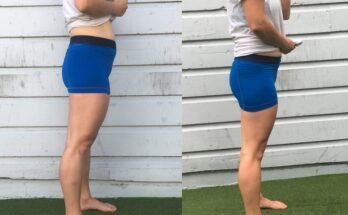Have you ever wondered if squatting and deadlifting on the same day is the best way to maximize your workout results? You’re not alone.
This question has puzzled many fitness enthusiasts and athletes, and finding the right answer could transform your exercise routine. Imagine the feeling of pushing your limits, growing stronger, and seeing faster progress. Sounds exciting, doesn’t it? But here’s the catch: combining these powerful lifts could either skyrocket your gains or lead to burnout.
The secret lies in understanding how your body responds and tailoring your approach accordingly. Are you ready to discover the ultimate strategy to enhance your performance and achieve your fitness goals? Dive into this article to uncover the truth behind squatting and deadlifting on the same day and how it could impact your workout success.
Benefits Of Squatting And Deadlifting Together
Combining squats and deadlifts saves gym time. You work on two major exercises in one session. It’s a smart way to fit workouts into busy days. Less time spent means more time for other activities.
Working squats and deadlifts together helps build strength faster. These exercises target many muscles. They push the body hard, making muscles grow stronger. Regular practice leads to noticeable gains. Stronger muscles mean better performance.
Athletes benefit from doing squats and deadlifts. These exercises enhance power and speed. They make legs and back strong, which is crucial for sports. Improved strength leads to better agility and endurance. Athletes see progress in their games.

Potential Risks And Drawbacks
Squats and deadlifts are hard exercises. They need good form. Doing both on the same day can be risky. Muscles get tired. Tired muscles can lead to injuries. Knees, back, and shoulders might hurt. Be careful to avoid pain.
Doing both exercises can be too much. Muscles need rest to grow. Without rest, they get weaker. Overtraining can make you feel tired. You might not want to exercise again. Balance is important in workouts.
Muscles need time to heal. Squats and deadlifts use many muscles. Doing both makes recovery harder. Sleep and eat well to help recovery. If you don’t, muscles stay sore. Sore muscles make it hard to exercise next time.
Factors To Consider
Beginners may find squats and deadlifts hard on the same day. Advanced lifters often handle both exercises. Start slow if you are new. Focus on form and safety. Progress as you get stronger.
Different goals need different plans. Strength building might need both exercises. Muscle growth could benefit from them too. Weight loss may not need both. Tailor your plan to what you want to achieve.
Recovery is key. Squats and deadlifts are intense. Listen to your body. Rest if you feel tired. Eating well and sleeping helps recovery. Don’t overdo it. Balance is important for progress.

Programming Tips For Success
Finding the right balance is key. Squats and deadlifts are both hard exercises. You must not do too much. Keep your intensity high but your volume low. This helps to avoid injury. Only do a few sets of each exercise. Focus on good form and effort. This way, you get stronger safely.
Warm-up is very important. It gets your body ready. Start with light exercises. Do leg swings and arm circles. This helps blood flow. Stretch your muscles gently. Then, do some easy squats and deadlifts. Make sure you feel good before lifting heavy weights.
Your body needs recovery after exercise. Rest is very important. Sleep helps your muscles heal. Eat good food, too. Protein helps muscles grow. Carbs give you energy. Drink lots of water. It keeps your body strong. Listen to your body. If you feel tired, take a break.
Alternative Approaches
Choosing whether to squat and deadlift on the same day can depend on your fitness goals and energy levels. Some athletes prefer separating these exercises to avoid fatigue and enhance performance. Balancing intensity and recovery is key to effective workouts.
Split Training Sessions
Some people choose to split their training. They do squats on one day. Deadlifts happen on another day. This method helps with focus. Muscles can rest better. This approach reduces injury risks. Each workout feels lighter. Energy is spread across days. More balance is achieved.
Incorporating Accessory Work
Accessory exercises can be added. These exercises support main lifts. They build strength in small muscles. Help with overall stability. Dumbbell rows or lunges are great. They are easy to do. Help with body balance. These exercises make squats and deadlifts better.
Periodization Techniques
Periodization involves planning workouts. Change routines every few weeks. It keeps muscles guessing. Prevents workout boredom. Helps avoid muscle fatigue. Use lighter weights some weeks. Increase weights over time. This helps with steady progress. Keeps workouts fun and fresh.
Expert Opinions And Research
Many strength coaches suggest squatting and deadlifting separately. They say it helps in focusing on form. Both exercises are tough and need good technique. Doing them on different days might reduce risk of injury. But some coaches believe doing both can save time. It depends on your goals and energy levels.
Studies show that combining exercises can be effective. But it can also be tiring. Muscles need time to rest and grow. Some research suggests separating them for better recovery. Others show no harm in doing them together. It is important to listen to your body.
Athletes share mixed views. Some find it challenging but rewarding. Others prefer separate days to give their best. Energy management is key here. It can help improve performance. Every athlete is different. Try both ways to see what fits best for you.
Personalizing Your Routine
Pay attention to how your body feels. Some days, you may feel strong. Other days, you might feel tired. Rest is important. It helps your muscles grow. Listen to any pain. Stop if something hurts. Always warm up before lifting. Stretch your muscles. Drink plenty of water. Stay safe and healthy.
Track your progress. Write down your workouts. Did you lift more than last time? Great! If not, that’s okay. Adjust your weights as needed. Small changes can help. Stay patient. Progress takes time. Celebrate each small win. Keep going. You’re doing awesome.
Ask a trainer for help. They know a lot about lifting. They can show you the right way. Learn proper form from them. This keeps you safe. Trainers can make a plan for you. This plan fits your goals. They answer your questions. Never be afraid to ask.

Frequently Asked Questions
Can I Squat And Deadlift On The Same Day?
Yes, you can squat and deadlift on the same day. This can save time and boost overall strength. Ensure you maintain proper form to prevent injury. Listen to your body and adjust weight and volume as needed.
How Should I Program Squats And Deadlifts Together?
Program squats and deadlifts by alternating their intensity. Focus on heavy squats and lighter deadlifts, or vice versa. This approach helps manage fatigue. Ensure adequate rest between sets and monitor your body’s response.
What Are Benefits Of Squatting And Deadlifting Together?
Combining squats and deadlifts enhances strength and muscular endurance. It also improves core stability and functional fitness. Additionally, it can save time in your workout routine, making it efficient and effective.
Will Squatting And Deadlifting Together Cause Fatigue?
Yes, performing both exercises can cause fatigue. Manage this by adjusting intensity and volume. Ensure proper rest and recovery. Listen to your body, and don’t push beyond your limits to prevent overtraining or injury.
Conclusion
Deciding to squat and deadlift on the same day depends on you. Your fitness goals and energy levels play a key role. Listen to your body. Some may benefit from combining them. Others might need separate days. Consider your experience and recovery time.
Start light if you’re unsure. Adjust your routine as needed. Prioritize safety and proper form. This ensures progress without injury. Remember, consistency is crucial. Find what works best for you. Keep challenging yourself, but stay safe. Your journey is unique.
Tailor your workouts to fit your needs. Enjoy the process and stay committed.

